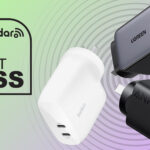It’s almost time for a new generation of Google Pixel phones – the company’s annual Made by Google event is scheduled for August 20, and we’re expecting to see official reveals for the Google Pixel 10, Pixel 10 Pro, Pixel 10 Pro XL, and Pixel 10 Pro Fold.
As we’ve recently covered, the Google Pixel 10 series is rumored to introduce 60W charging, which would mark a significant boost over the power draw offered by the current generation. For reference, the Google Pixel 9 and Pixel 9 Pro offer 27W charging, while the Pixel 9 Pro XL manages 37W. The Pixel 9 Pro Fold, however, is capped at a rather low 21W.
It follows that 60W charging capabilities could have a significant effect on the Pixel 10 series’ charging speeds. The increase won’t literally translate to double – additional factors like temperature and battery condition can affect charging speed – but the 33W increase is bound to have a noticeable impact.
If Google’s rumored charging upgrade proves real, I hope Samsung and Apple take note for the release of the Galaxy S26 and iPhone 17 series, respectively.
An overdue upgrade
As I recently discussed, battery tech is one of the key things I look out for when recommending or even purchasing phones for myself, simply because it’s developing so quickly.
So, why have Google, Apple, and Samsung been so slow to increase charging speeds? There are multiple possible answers.
Firstly, it makes sense that the mainstream western phone makers would exercise a bit of restraint when it comes to battery tech, as batteries are historically more problematic than other components – the Samsung Galaxy Note 7, for instance, was recalled in 2016 due to battery explosions in some units, and more recently, Google pulled the Pixel 6a from sale due to battery issues.
Batteries are perhaps the most chemically volatile components in modern smartphones, so from that point of view, it’s sensible to avoid applying too much stress to them.
Secondly, flagship smartphones from the ‘big three’ now all come with the promise of several years of software updates. Batteries are ultimately consumable components that degrade with use and exposure to heat, and increasing charging power typically increases heat exposure, too. So, if a phone is to survive long enough to see its seventh year of updates, manufacturers need to be cautious about how hard they throttle their batteries.
Taking the fight to Chinese phone makers
Don’t get me wrong, the Google Pixel 9 is already pushing respectable numbers when it comes to power delivery. The best Apple manages is around 30W with the iPhone 16 Pro Max, and Samsung enables 45W charging for the Galaxy S25 Plus and Galaxy S25 Ultra.
However, if we take a look at what certain Chinese phone makers are getting up to, these numbers start to look pretty middling.
The OnePlus 13 – our reigning champ for the title of best Android phone – supports up to 80W charging out of the box, and is even compatible with OnePlus’ 100W SuperVOOC charger.
60W charging speeds could give the Pixel 10 series a much-needed advantage over the iPhone 16 series and Galaxy S25 lineup.
As for other brands, the Honor Magic 7 Pro charges with 100W of power draw, the Oppo Find X8 Pro supports 80W charging, and the Xiaomi 15 Ultra supports 90W charging. These phones are limited in their availability, however.
It’s been the case for a while now that Chinese phone makers, in general, push the envelope with hardware before the ‘big three’ do. As mentioned, these phones can be hard to get hold of (especially in the US), so they aren’t often seen as a threat to Google, Apple, or Samsung.
With that said, I’m glad Google is tipped to be leading the charge here. 60W charging speeds could strengthen the Pixel 10 series’ position against OnePlus et al and give Google’s smartphone series a much-needed advantage over the iPhone 16 series and Galaxy S25 lineup (albeit one I hope Apple and Samsung eventually copy).
What do you think? Is 60W charging enough of an upgrade to give the Google Pixel 10 series a real advantage? Let us know in the comments below.
Read the full article here










